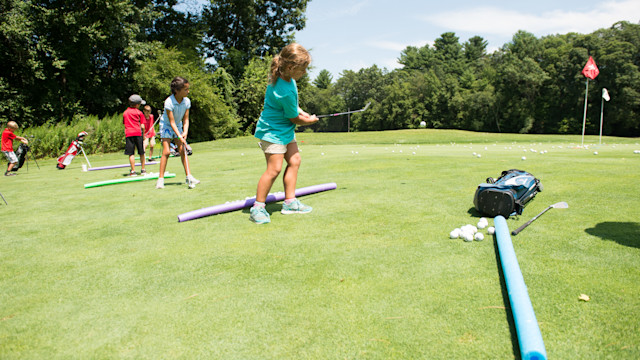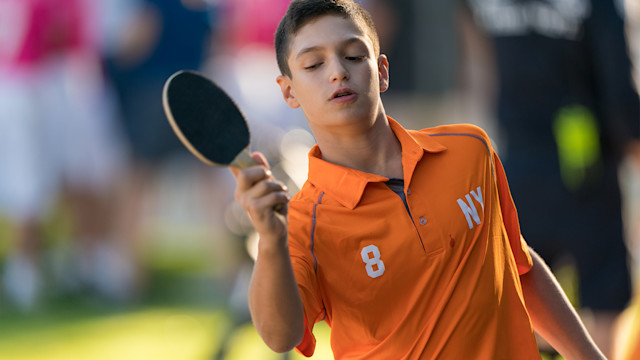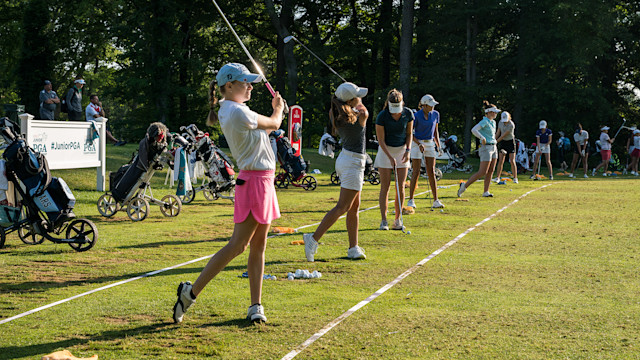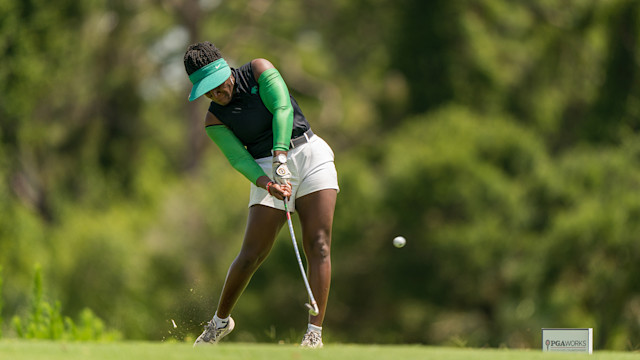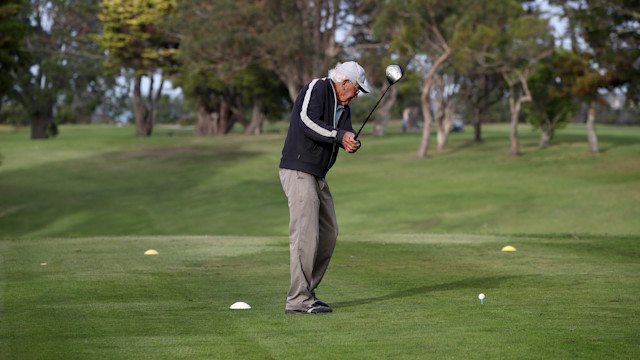From the PGA
American Development Model: Play to Compete
Published on
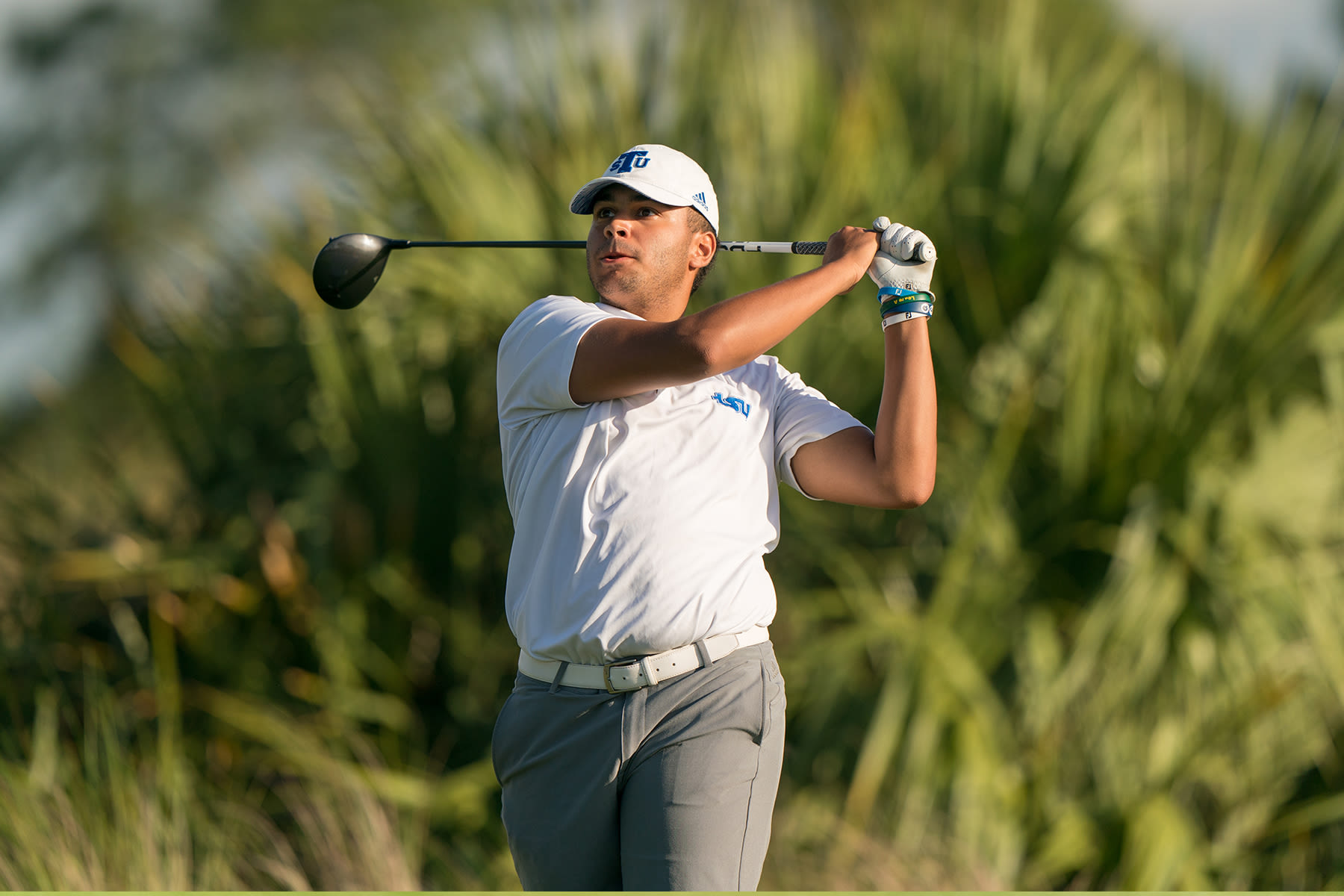
Play to Compete
Age (Please note: Ages are guidelines, not restrictions)
Girls 15-21
Boys 16-23
Primary focus: Competition. This stage centers around optimum performance in the ring. Every aspect of training becomes intensified during this stage, with most players looking at golf from a year-round, long-term perspective. The ADM recommends that players spend 60 percent of their time in competition-training and competition. At this stage, a coach should be supervising all aspects of the game with parents acting as the support system. Fitness experts are also key to avoid injury.
Competition level: Players and coaches should work together to develop a competition calendar and review the overall performance annually.
What the coach recommends: The No. 1 reason Bobby Clampett moved from player to coach to was help improve the overall instructional landscape. The longtime PGA Tour and Champions player believes that many parents struggle to find the right coach to take their junior player to the next level. Too much is based on which touring professionals are in the stable, Clampett says, versus the experience of the coach and his or her teaching model. Areas of focus must include the ability to simplify things in the heat of competition; course management skills; how to chart a course; how to train in practice; how to control your emotions and understand self-talk; a deeper knowledge of equipment nuance and so much more.
Coach says: “Top performers that don’t make it have never acquired the proper skills to understand how to assess and correct missed shots.”
Girls 15-21
Boys 16-23
Primary focus: Competition. This stage centers around optimum performance in the ring. Every aspect of training becomes intensified during this stage, with most players looking at golf from a year-round, long-term perspective. The ADM recommends that players spend 60 percent of their time in competition-training and competition. At this stage, a coach should be supervising all aspects of the game with parents acting as the support system. Fitness experts are also key to avoid injury.
Competition level: Players and coaches should work together to develop a competition calendar and review the overall performance annually.
What the coach recommends: The No. 1 reason Bobby Clampett moved from player to coach to was help improve the overall instructional landscape. The longtime PGA Tour and Champions player believes that many parents struggle to find the right coach to take their junior player to the next level. Too much is based on which touring professionals are in the stable, Clampett says, versus the experience of the coach and his or her teaching model. Areas of focus must include the ability to simplify things in the heat of competition; course management skills; how to chart a course; how to train in practice; how to control your emotions and understand self-talk; a deeper knowledge of equipment nuance and so much more.
Coach says: “Top performers that don’t make it have never acquired the proper skills to understand how to assess and correct missed shots.”
Athletic skills: Agility, footwork, balance, strength, endurance, speed, power and flexibility. Individualized annual plans should be developed at this stage. Important to monitor for overuse injuries and mental burnout.
Technical skills: Repetition of fundamental skills, curbing bad habits, innovating, tweaking and fine tuning. Mastering skills.
Psychological Development: Self-defined enjoyment and participation. Flexibility and trying new things, responsibility, respect, leadership, communication, interpersonal skills and mental toughness. Long-term goal setting.
Social Development: Seeking independence, logical and deductive reasoning. Healthy adult/mentor relationships are beneficial.
Practice: 32-42 weeks a year. 30-40 hours per week. Three to four hour practice session. Practice schedule should be reviewed and monitored via coach.
Competition: Personalized competition plan based on age. Annual review of performance & competition planning with coach.
Equipment: Custom fit equipment at this stage becomes the norm.
Where to play: Males up to 7,200 yards. Females up to 6,400 yards
